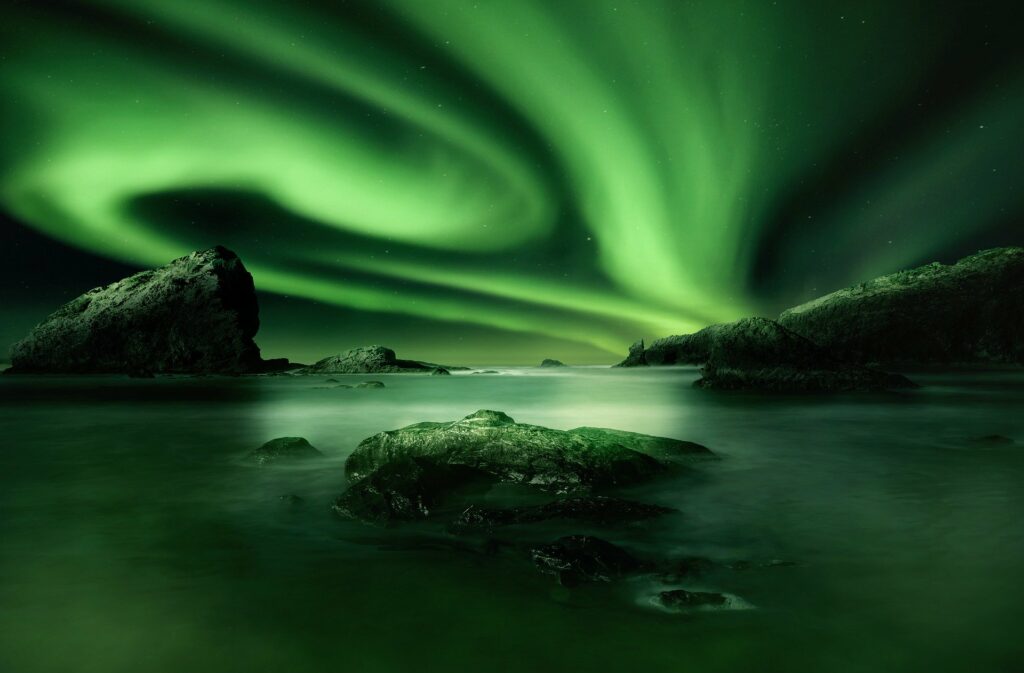
Best National Parks to See the Northern Lights in the USA in 2024
- Jennifer Melroy
- Last Modified May 11, 2024
- First Published on July 1, 2020
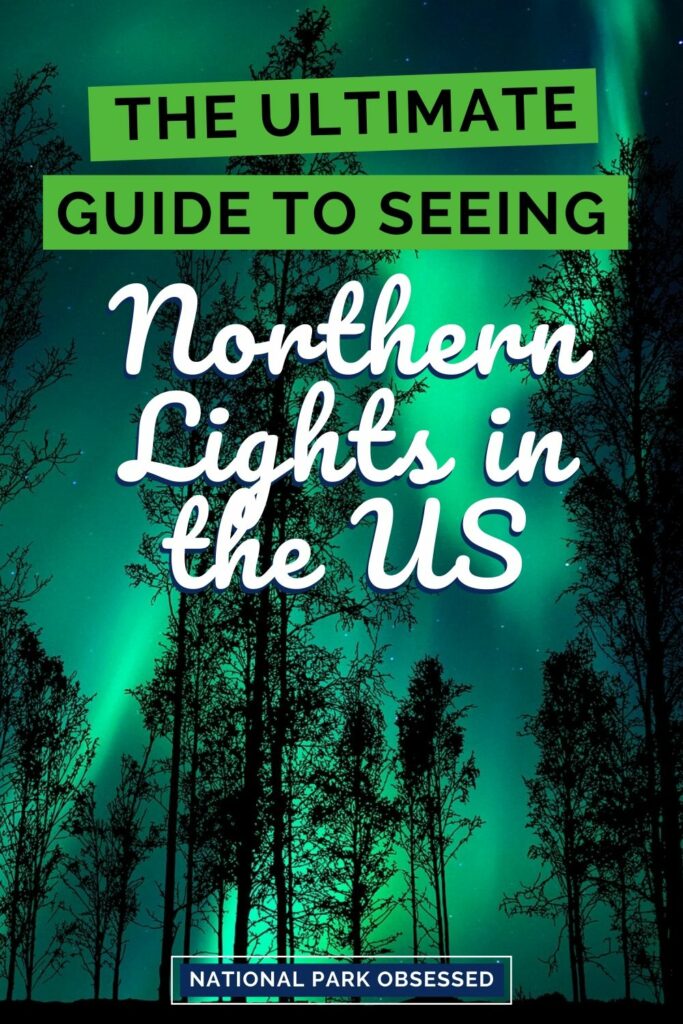
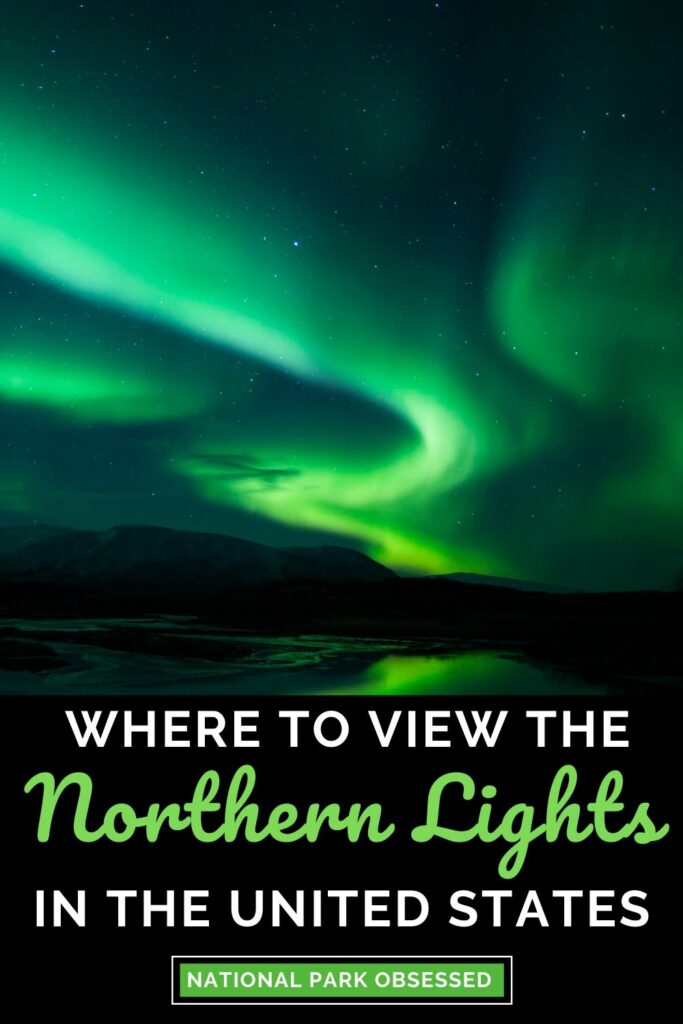
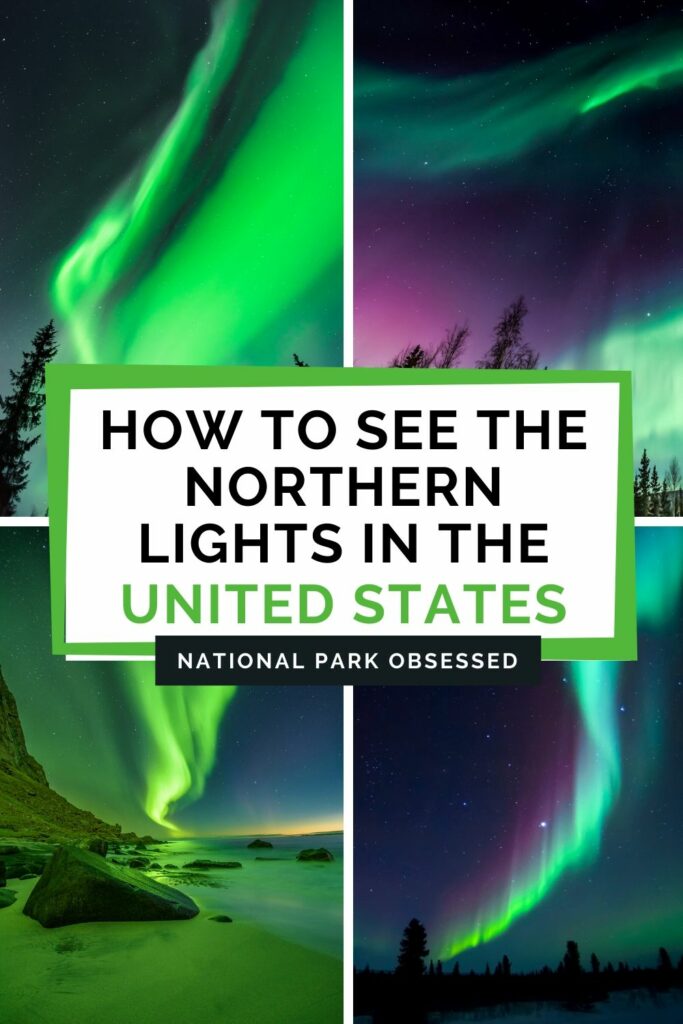
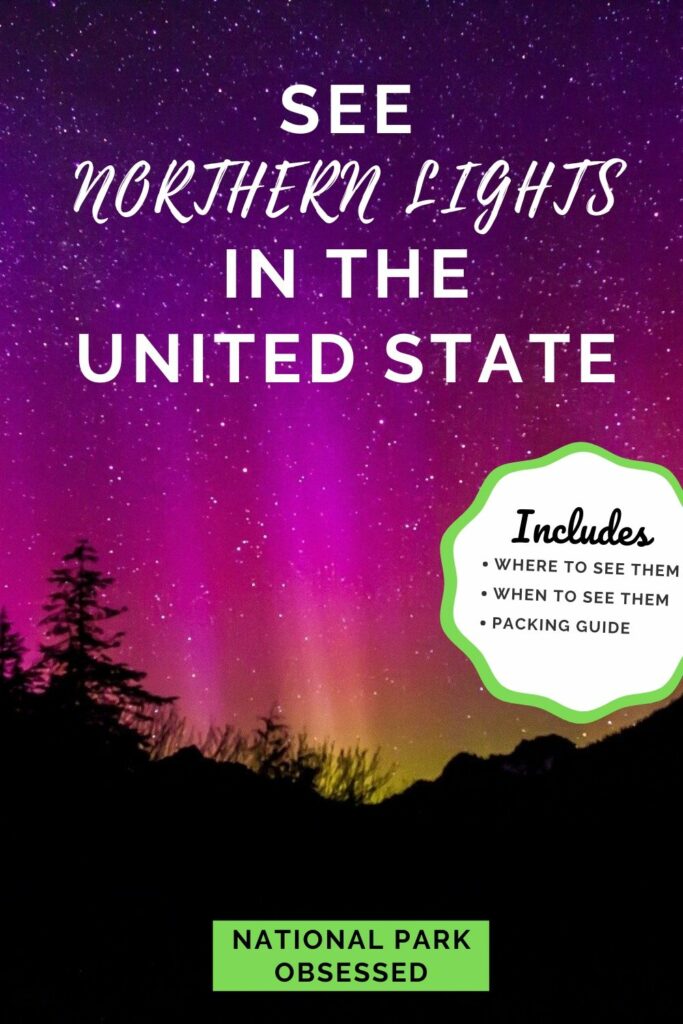
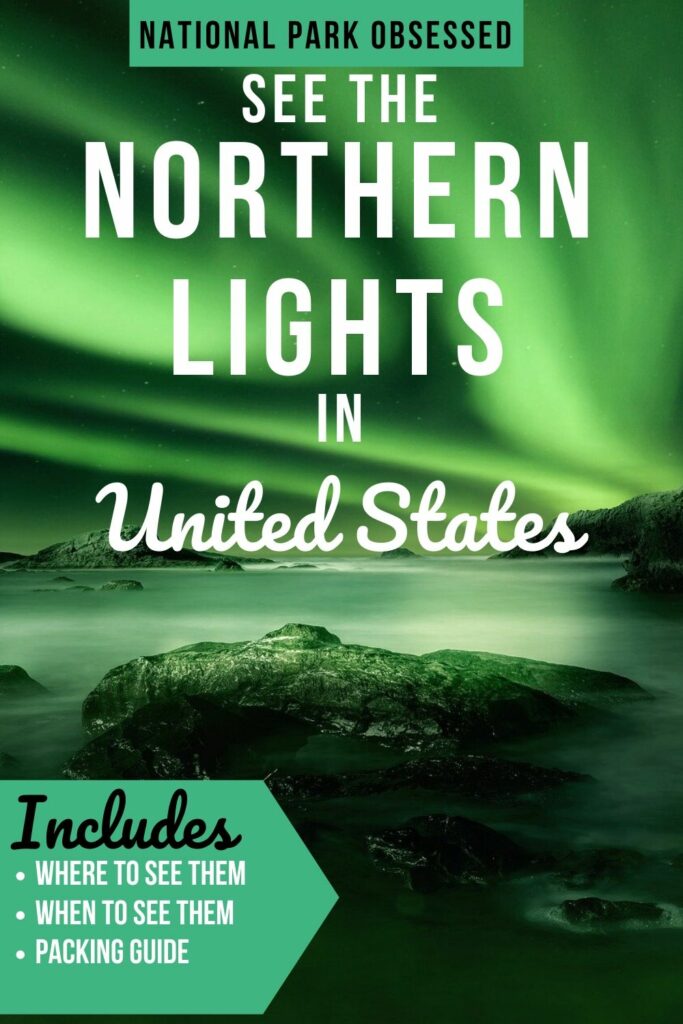
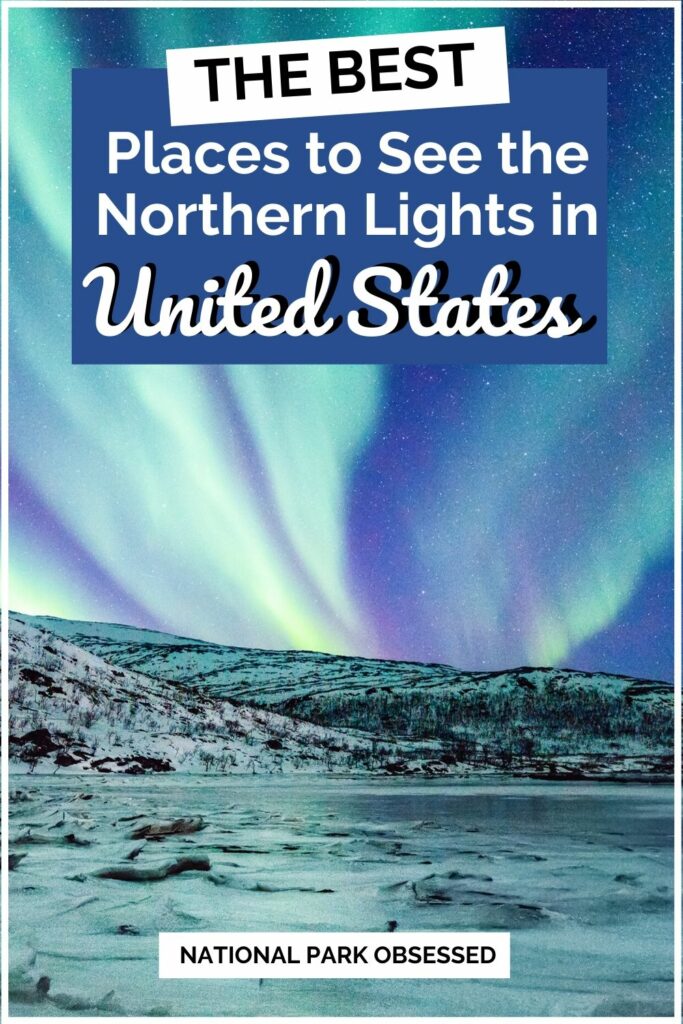
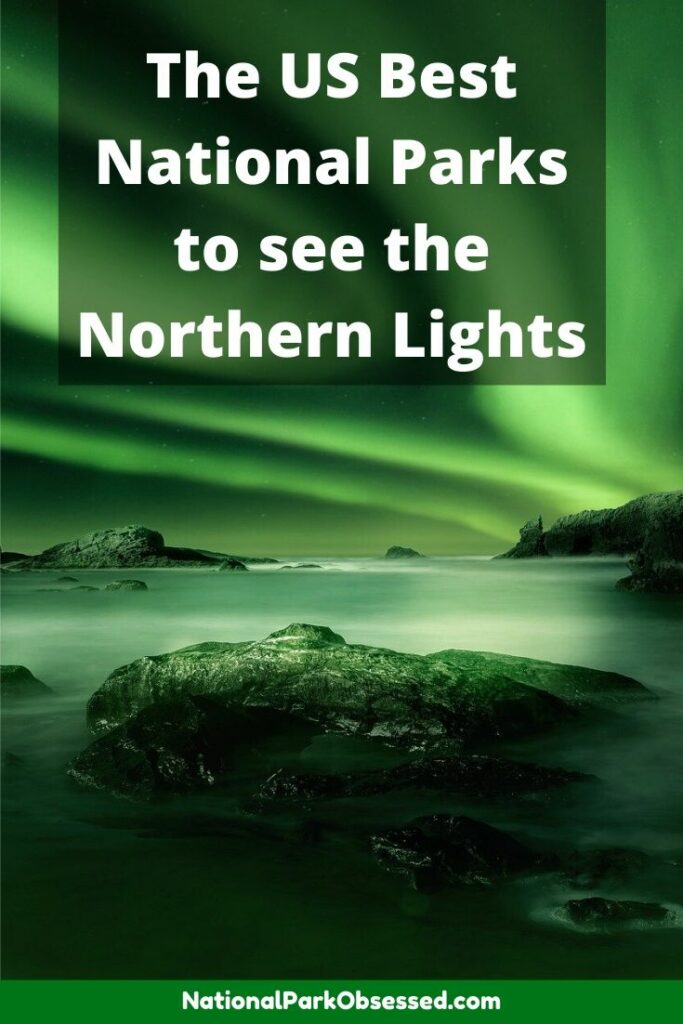
There are few phenomenons that are more amazing than the Northern Lights. It is one of the greatest shows on earth. Seeing the enchantment of the northern lights is always a special moment and it is even more special when you see the northern lights in a US National Park. The Northern Lights are typically associated with sub-Arctic and Arctic regions of Iceland, Canada, Norway, Russia, and Alaska. Surprisingly, the northern lights are regularly seen in the northern states of continental USA. Here are the 9 Best National Parks to See the Northern Lights in the USA
I have been lucky enough to watch the Aurora Borealis dance across the sky in three of the national parks on the list. Each time was aww inspiring.
This post was published in January 2020. It was updated in May 2024.
This post may contain affiliate links, meaning if you book or buy something through one of these links, I may earn a small commission at no extra cost to you! Read the full disclosure policy here
National Park Trip Planning Resources
Here are some of the best resources to plan your national park travels. If you are new to the parks, National Park Travel Planning Bundle is the perfect resource to help you plan your dream trip, get it planned and reduce the stress of planning your National Park trip.
- National Parks Must-See: This is a concise guide to each of the 63 parks. Each guide is 1 page and features the best activities and hikes along with need to know the information to jump-start planning for that park. >>> Buy Now
- National Park Itineraries: Let someone else do the planning with our pre-planned National Park Itineraries for less than $6 a day.
- Get Free Entrance: The America the Beautiful National Park Pass is an $80 pass that is valid for 12 months. The pass provides free entrance to the National Parks and more than 2,000+ other federal lands.
- Make sure you have a National Park Passport: Here is my favorite National Park Passport.
- For Flights: Use Skyscanner to get the best prices on your flights.
- For Rental Vehicles: Browse for deals on rental cars at RentalCars.com. Or rent an RV or campervan with RVshare or Outdoorsy.
- For Hotels: I book my hotels on Hotels.com and Booking.com.
- For Vacation Rentals: I love VRBO for my vacation rentals.
- For Camping: If making camping reservations in the parks, I use Recreation.gov. For private campgrounds, I use Campspot.
- Buy Outdoor Gear: I get most of my outdoor gear at REI.
- Looking for National Park Gift Ideas: Here are the 55+ Best National Park Gifts Ideas.
- Don’t forget travel insurance: I get my travel insurance through World Nomads.

Things to Know about Viewing the Northern Lights in the U.S
What is the Aurora Borealis?
How technical do you want to get? There are researches who have spent their entire career studying the Northern Lights and their causes.
Here is the simple answer. Electrically charged particles are released from the sun where they collied with the gases in Earth’s atmosphere. This collusion excited the oxygen and nitrogen molecules and causes them to glow. The aurora’s colors are dictated by which molecules are struck and at what altitude.
- Green – oxygen, up to 150 miles in altitude
- Red – oxygen, above 150 miles in altitude
- Blue – nitrogen, up to 60 miles in altitude
- Purple – nitrogen, above 60 miles in altitude
The aurora appears to dance across the sky because of the shifting combinations of these magnetic and electrical forces and the atmospheric currents. There are two aurora bands centered around Earth’s magnetic poles. The bands are hundreds of miles wide that roughly overlap the Arctic and Antarctic Circles.
In the Northern Hemisphere, the aurora is known as the Aurora Borealis or Northern Lights. In the Southern Hemisphere, they are known as Aurora Australis or Southern Lights.

Where Can you See the Northern Lights in the US?
As their name suggests, the further north you are in the United States the more likely you are to see the Northern Lights.
The best U.S. state for seeing the northern lights is Alaska. The prime season in Alaska is mid-September to late April. Outside of these months, the long summer day where the sun barely sets and the lights cannot be seen.
The northern lights are regularly seen in the darkest regions of the northern continental United States. These states include Idaho, Maine, Michigan, Minnesota, Montana, North Dakota, and Washington.
How Far South Can You See the Aurora Borealis?
The answer is it depends. On a regular night with limited solar activity, the northern lights are likely limited to hundreds of miles wide band that encompass the Arctic Circle (66 degrees North). A coronal mass ejection can greatly expand the visible range and it isn’t unheard for states in the north-central region such as Ohio or Wyoming to see the lights.
There are historical records that indicated that the northern lights have been seen as far south as Colombia and China during a massive solar event in 1859.

Where Can I Find the Northern Lights Forecast?
The National Oceanic and Atmospheric Administration (NOAA) and National Weather Service (NWS) provide a real-time aroura forecast map. This map gives a 20 to 40-minute forecast with a color-coded probability of seeing a visible aurora.
>> Click here to see the NOAA’s Northern Lights Forecast.
The University of Alaska Fairbanks’s Geophysical Institute has a longer range Aurora Forecast that you can see the predictions for the next couple of days.
>> Click here to Geophysical Institute Forcast.
On the Geophysical Institute forecast, you will notice the Kp Index. The Kp Index is a 0-9 scale that is used to characterize the magnitude of geomagnetic storms. The higher the number the more electrically charged particles are being released from the sun and the more active and brighter the aurora will be. The map below shows what Kp Index needed for a visible aroura at specific latitudes.
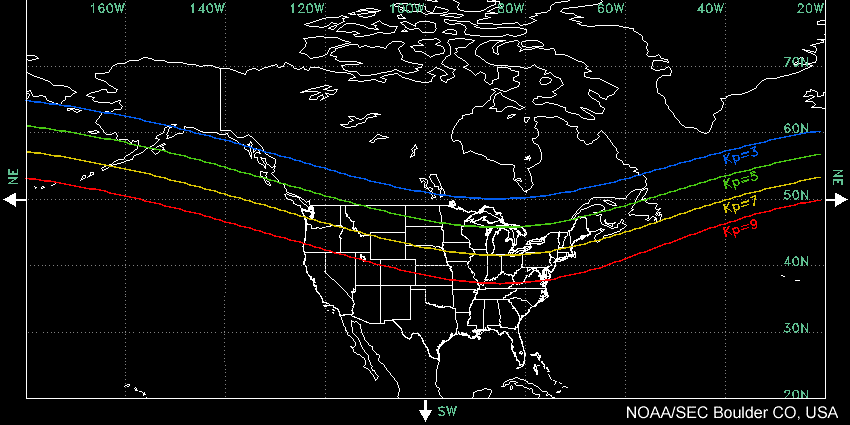
What are the Best Hours to See the Northern Lights?
To see the northern lights, you need darkness. The darker the better so usually the best time to see the northern lights is from Midnight to 3 a.m. I have had great luck at 2 a.m but I have seen the lights start as early as 9 p.m. Keep an eye to the sky on nights when the Kp Index is high.
Late fall to early spring provides the best chance to see the Aurora Borealis. This time gives you a longer period of darkness and thus more time to see the aurora dance across the sky.
What Time of Year can the Aurora Borealis Be Seen?
The Northern Lights can be seen all year-round. The best conditions are usually found in late fall to early spring. It is possible to see the northern lights outside of this time frame. I was in Badlands National Park the week after July 4th several years ago. I was up late one night stargazing when one of the photographers realized he was getting northern lights in his photos. We started to watch closely and had a very faint northern light show.
I would keep an eye on the northern lights forecast anytime you are visiting a Canadian border state. With the right conditions, such as a solar storm, you could be in for an amazing show even during the middle of summer.
What to wear for Northern Lights Viewing?
There is no easy answer to this question. It depends on where you are and what the weather is doing. For example, I was in shorts when I saw the northern lights in Badlands National Park. I was in a thick jacket and gloves when I saw them in Denali National Park. Here are some general items I always carry with me when I’m planning on stargazing or northern light viewing.
- Lightweight down jacket: I always carry a lightweight wind and water-resistant down jacket. This down jacket packs small but provides a good deal of warmth when needed.
- Hooded Sweatshirt: A hoodie is a little bulkier than my down jacket, but it is nice to have something that isn’t quite as warm as down but is warmer than a standard t-shirt. It can also double as a second layer when it’s really cold.
- Gloves: A good pair of tech-friendly gloves can keep your hands warm while allowing you to change camera and phone settings.
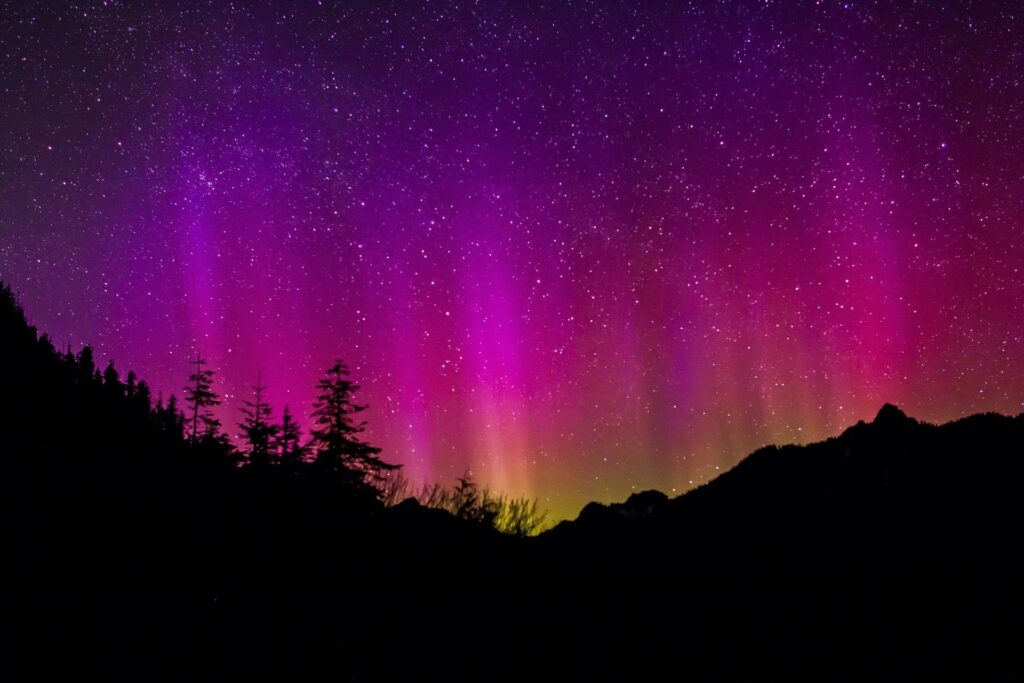
Best USA National Parks to see the Northern Lights
All of the national parks on this list see the northern lights on a semi-regular basis. All of the parks on are in Alaska, along the US/Canadia, or near the US/Canada border. Every park on this list is known for its dark skies and is prime star viewing sites.
The Northern Lights can occur at any time of year but they can only be seen during darkness. Late fall, winter, and early spring provide the longest and darkest nights.
For most of these parks, the BEST northern light viewing is late fall. Access to some of these parks is VERY limited and few services are provided in winter and early spring.
9. Theodore Roosevelt National Park, North Dakota
Theodore Roosevelt National Park is not a national park to visit in hopes of seeing the Northern Lights but when you are there, keep an eye on the forecasts. You never know when a solar storm will happen and if the conditions are right you can be in for a spectacular show. Theodore Roosevelt is located in western North Dakota and has minimal light pollution.
Even if a solar storm isn’t going on this wark is worth a visit. It is made up of three district units -North, South, and Elkhorn. Each unit is an hour or so drive from each other and the park offers numerous hiking trails and plenty of wildlife viewing opportunities.
The South Unit is located near I-90 and is the most popular unit of the park. It offers a scenic drive and several different hiking trails near the Little Missouri River
Optimal Theodore Roosevelt National Park Aurora Borealis Viewing Period: November to March, but possible year-round
Minimum Kp Index: 5
Get help planning your visit to Theodore Roosevelt National Park:
- National Parks of North Dakota
- All about Theodore Roosevelt National Park
- One Day in Theodore Roosevelt National Park
8. North Cascades National Park, Washington
Like Teddy Roosevelt, North Cascades National Park is not a park you visit on a northern light quest. It is a park you visit and watch the Kp Index and if there is a solar storm, then you stay up and watch. North Cascade National Park is located in northern Washington and shares a border with Canada.
North Cascades is one of the least visited national parks despite being located near Seattle. This remote park has a limited number of roads and most of the park is only accessible via hiking. Park visitors who are willing to make the effort will find an untamed wilderness full of rugged mountains, old-growth forests, alpine lakes, and waterfalls.
North Cascades National Park part of a larger protected area that included the Ross Lake National Recreation Area and the Lake Chelan National Recreation Area.
Best time of year to see the Northern Lights in North Cascades National Park: November to March, but possible year-round
Minimum Kp Index: 7
Get help planning your trip to North Cascades National Park
7. Sleeping Bear Dunes National Lakeshore, Michigan
Sleeping Bear Dunes National Lakeshore is located on the Lower Penisula of Michigan on the shores of Lake Michigan. The park protects 35-miles of coastline along with the islands of North and South Manitou. The lakeshore offers towering bluffs, lush forests, several inland lakes and an amazing selection of flora.
Sleeping Bear Dunes National Lakeshore offers dark skies and amazing views of Lake Michigan. The park regularly has star events and the dunes offer the perfect place to enjoy a night of stargazing while hoping the northern lights come out.
During the day, visitors have the opportunity to go hiking, fishing, boating or numerous other activities. In the winter, there are plenty of skiing and snowshoeing opportunities.
Ideal Northern Lights Viewing Period in Sleeping Bear Dunes National Lakeshore: November to March, but possible year-round
Minimum Kp Index: 6
6. Pictured Rocks National Lakeshore, Michigan
Pictured Rocks National Lakeshore is located on the Upper Pennisula of Michigan. This National Lakeshore is famed for its multicolored cliffs and unusual sandstone formations. The park’s shoreline offers north-facing views that offer perfect viewing when the northern lights are active.
The skies of Pictured Rocks National Lakeshore are dark and provide excellent star viewing on clear nights. When in the area keep an eye on the aurora forecast and you might be lucky enough to see the northern lights.
During the day, Pictured Rocks is a great place to go sea kayaking and boat tours are offered to many of the more popular formations.
Best Pictured Rocks National Lakeshore Aurora Borealis Viewing Months: November to March but possible year-round
Minimum Kp Index: 5
If you are looking for a northern lights calendar, Bryan Mitchell Photography offers a Northern Light calendar with photos from Michigan.
Get help planning your trip to Pictured Rocks National Lakeshore:
5. Isle Royale National Park, Michigan
Isle Royale National Park is one of the most remote and difficult National Parks to access in the lower 48. The park located in Lake Superior and is the only National Park to officially close. The park is open from April 16 to October 31 of every year. This park’s remote location provides its dark sky and the only light pollution is a slight sky glow from Canada.
Isle Royale is one of the best national parks for summer viewing of the northern lights. The lights are most commonly seen in April, May and October but they do occur all summer long if the solar conditions are right.
It is worth staying up late when visiting Isle Royale, the shoreline campgrounds all offer amazing stargazing along with the opportunity to hear Isle Royale’s wolves howl.
When to see the Northern Lights in Isle Royale National Park: October, April, May
Minimum Kp Index: 5
Get help planning your trip to Isle Royale National Park:
- National Parks of Michigan
- How to Get to Isle Royale
- 16 Things to know before visiting Isle Royale National Park
4. Voyageurs National Park, Minnesota
Voyageurs National Park in northern Minnesota shares a border with Canada and offers some of the best year-round Aurora Borealis viewing conditions. The park is working on its International Dary Sky Park certification. This park is one of the few where you can enjoy the northern lights while on a houseboat or canoe.
If you don’t have a boat to access park’s many boat-in campsites, there are plenty of shore viewing sites such as the Rainy Lake or Ash River Visitor Centers or the parking lots of the Forest Overlook.
Voyageurs National Park is a great national park to explore and the shorelines provide numerous viewing opportunites. If you are really lucky, you might hear the wolves howl while watching the northern lights.
Idea Northern Lights Viewing Time in Voyageurs National Park: November to April, but possible year-round
Minimum Kp Index: 5
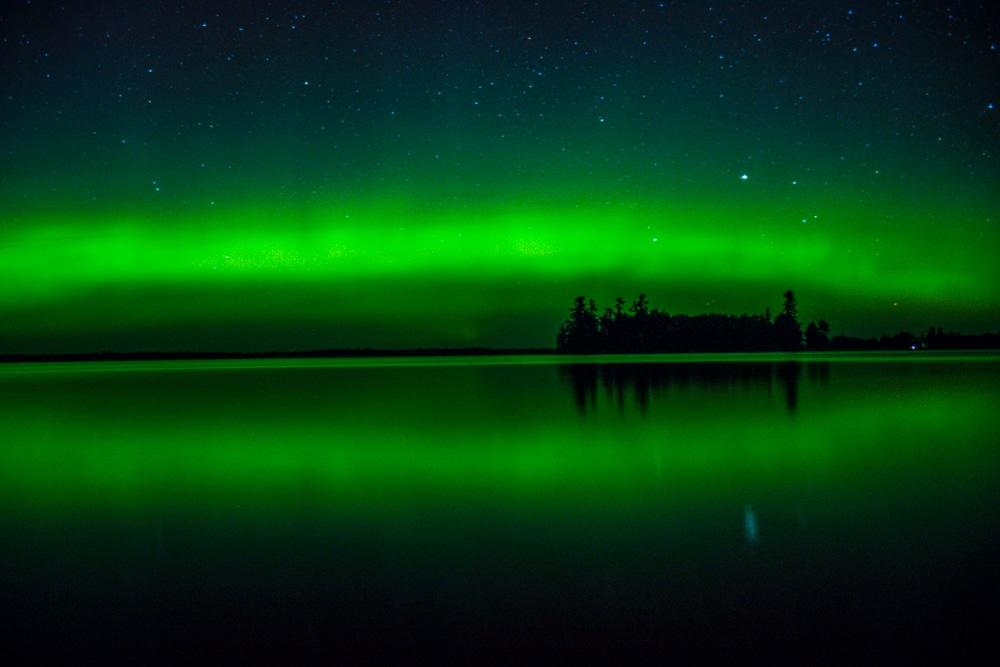
Get help planning your visit to Voyageurs National Park:
3. Glacier National Park
Glacier National Park is often called the “Crown Jewel of the Continent.” There are a couple of reasons for this. One of those reasons is that it is a prime location for Northern Light Viewing in the Lower 48. The park is an International Dark Sky Park and it is possible to see the northern lights year-round.
Glacier National Park is located in Northern Montana and shares a border with Canada. Given its remote location, the park doesn’t have any light pollution and offers amazing stargazing on clear nights. Those amazing star views turn into amazing northern light views where the lights decided to come out.
Keep an eye on the northern light forecasts when visiting this park, you never know what the sun is going to do. If there is a high Kp Index, Lake McDonald and Goat Haunt offer great northern sky views.
When to see the Aurora Borealis in Glacier National Park: November to March, but possible year-round
Minimum Kp Index: 5
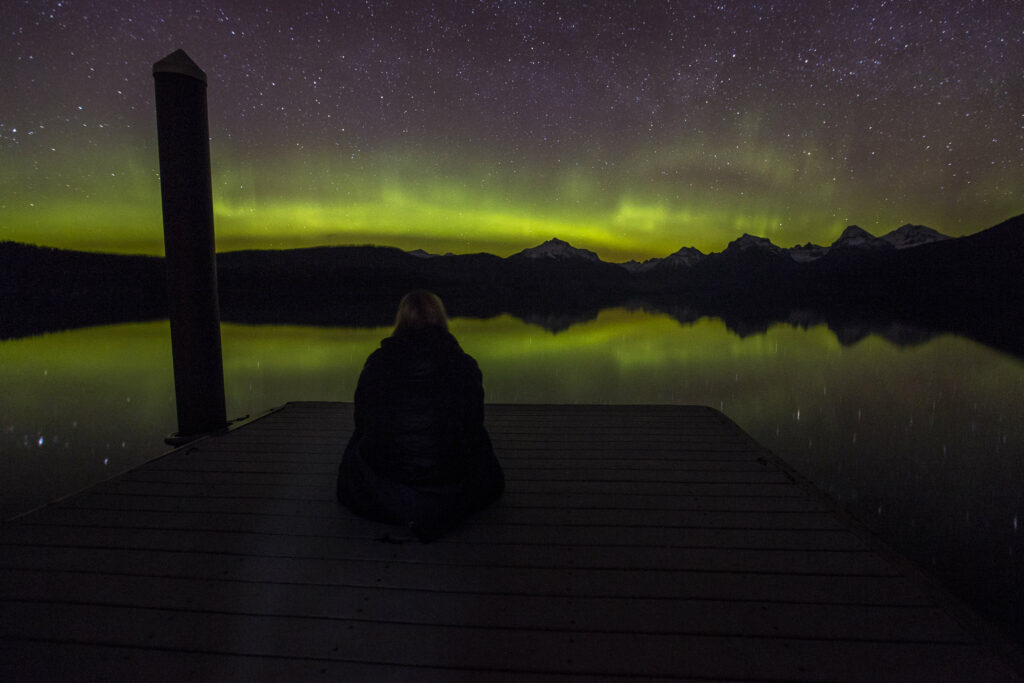
Get help planning your trip to Glacier National Park
2. Wrangell-St. Elias National Park, Alaska
Wrangell-St. Elias National Park is a MASSIVE national park in southeast Alaska and shares a border with Canada. Like most Alaskan National Park, Wrangell-St. Elias doesn’t have an issue with light pollution. The park is accessible via the road system and has two main roads that enter the park, but most of the park is remote and requires a flight to visit.
While officially the park is open year-round, services outside early June to early September are extremely limited. During much of the summer, Wrangell is getting almost 24 hours of daylight making the northern lights impossible to see. Once the fall arrives in mid-August, it becomes possible to see the northern lights. Northern light season in the park runs from mid-August to late-April.
Winter access to Wrangell National Park isn’t for the faint of heart. The park roads are closed and unmaintained during the winter. Park service is minimal and mostly related to the few small homesteaders who still live within the park. If coming to visit Wrangell be prepared.
Optimal Wrangell-St. Elias National Park Aurora Borealis Viewing Period: September to April
Minimum Kp Index: 3 (possible to see with a 2)
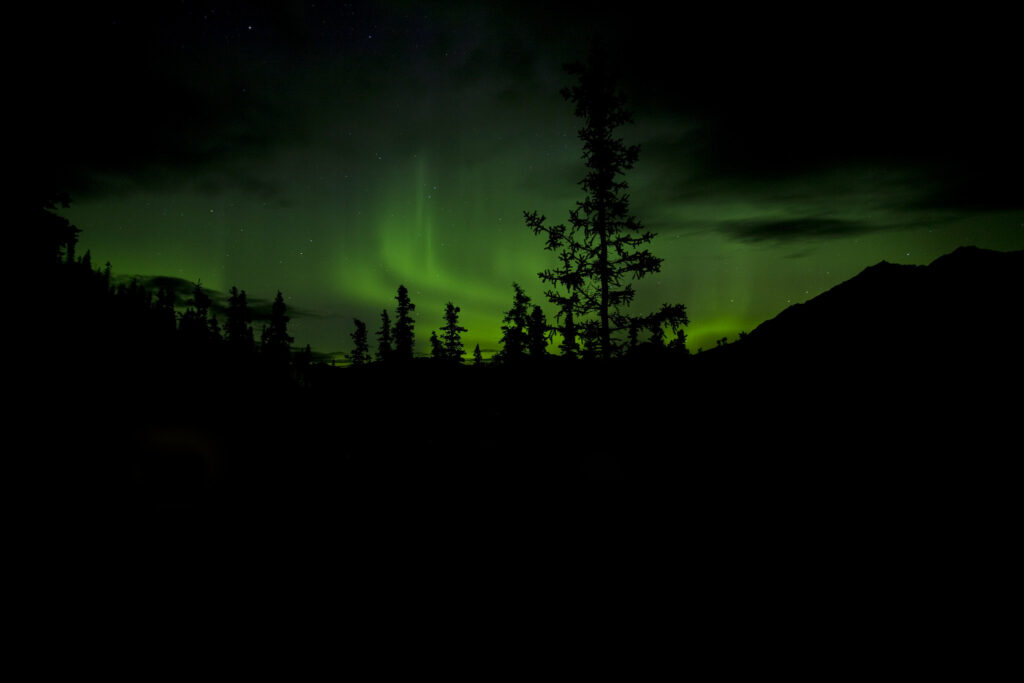
Get help planning your trip to Wrangell-St. Elias National Park and Preserve
1. Denali National Park and Preserve, Alaska
Denali National Park and Preserve is an amazing place to visit. It is the premier place to see the Northern Lights in the United States. The park has no light pollution and is one of the few Alaskan National Park that is easily accessible during the winter months. The park is located a few hours train ride or drive from the cities of Anchorage and Fairbanks.
Surprisingly this northern park is open year-round. Making it a perfect park to visit in the winter to see the northern lights. Just not in the months of June and July when there is almost 24 hours of daylight. But once the night starts to return in late August, it is possible to see the northern lights. Northern light season in the park runs from late August to mid-April.
Early September is my favorite time to visit Denali National Park. The weather is usually cool and crips. The bull moose have their massive antlers and the fall colors are unrivaled. And the snow hasn’t arrived and most of the park services are still open and best of all it’s a great time to see the northern lights.
When to see the Northern Lights in Denali National Park and Preserve: September to March
Minimum Kp Index: 3 (possible to see with a 2)
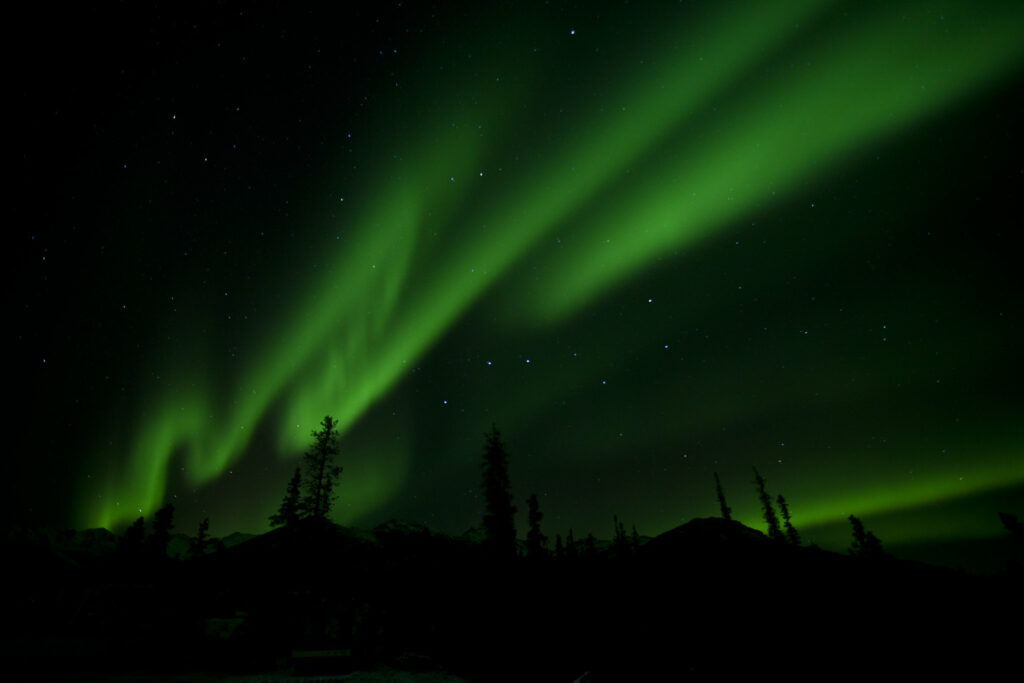
Get help planning your trip to Denali National Park
- National Parks of Alaska
- All About Denali National Park and Preserve
- How to Get to Denali National Park
- 10 Things to Know Before Visiting Denali National Park
- 8 Books to Read Before Visiting Denali National Park and Preserve
- The Ultimate Guide to Camping in Denali National Park
- Denali Road Lottery – Everything You Need to Know
Other Amazing Places to see the Northern Lights in North America
- Acadia National Park, Maine
- Aroostook National Wildlife Refuge, Maine
- Baxter State Park, Maine
- Chena Hot Springs Resort, Fairbanks, Alaska
- Headlands International Dark Sky Park, Michigan
- Idaho Panhandle National Forest, Idaho
- Manitoba, Canada
- Superior National Forest, Minnesota
- White Mountains National Recreation Area, Alaska
Pin to Share: Best National Parks to See the Northern Lights in the USA

Jennifer Melroy
Hi, I'm Jennifer!

Welcome to the wonderful world of National Parks. I'm here to help you plan your NEXT amazing adventure through the United States National Parks and beyond. I want the national parks to be accessible to all.
I live in Tennessee, and when I'm home, you can find me hiking in the Smokies and the Cumberland Plateau.
58/63 National Parks
250+/423 National Park Units
Want to know more? Start Here.
ACKNOWLEDGEMENT OF LAND
On this site, we promote travel to the United States and beyond that are the traditional lands of Indigenous and First Nations peoples.
With respect, I make a formal land acknowledgment, extending my appreciation and respect to these lands’ past and present people.
To learn more about the people who call these lands home, I invite you to explore Native Land.
DISCLAIMER
National Park Obsessed assumes no responsibility or liability for any errors or omissions in the content of this site (NationalParkObsessed.com). The information contained in this site is provided with no guarantees of completeness, accuracy, usefulness or timeliness. You are encouraged to conduct your own due diligence before acting on the information provided on this site and should not rely on the opinions expressed here.
There is an inherent risk in all outdoor recreation activities, the reader assumes all responsibility for their own personal safety.
DISCLOSURE
We are a participant in the Amazon Services LLC Associates Program, an affiliate program designed to provide a means for us to earn fees by linking to Amazon.com and affiliated sites.
Privacy Policy • About Us • Contact
Select stock photography provided depositphotos
Copyright ©2023 National Park Obsessed, LLC
Last Updated on 11 May 2024 by Jennifer Melroy

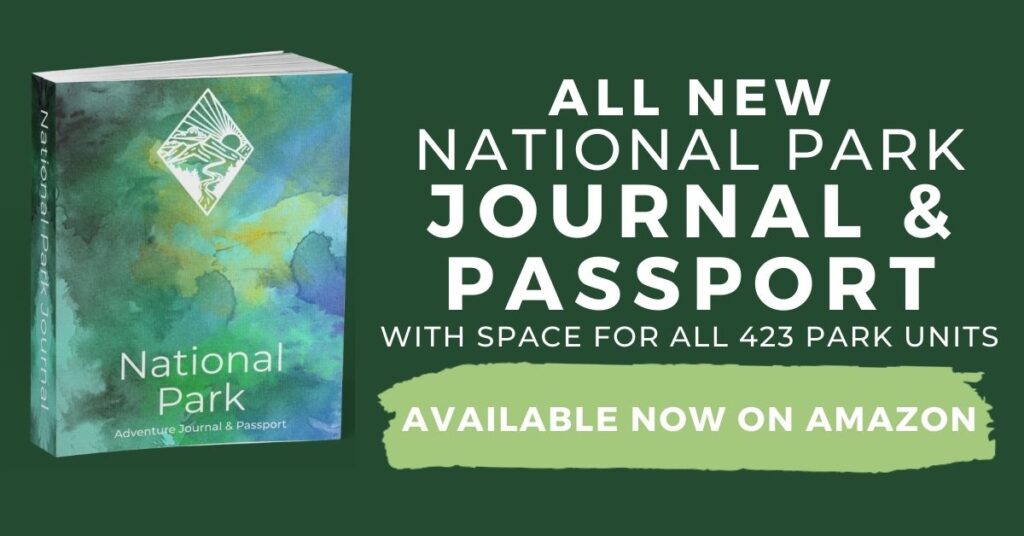
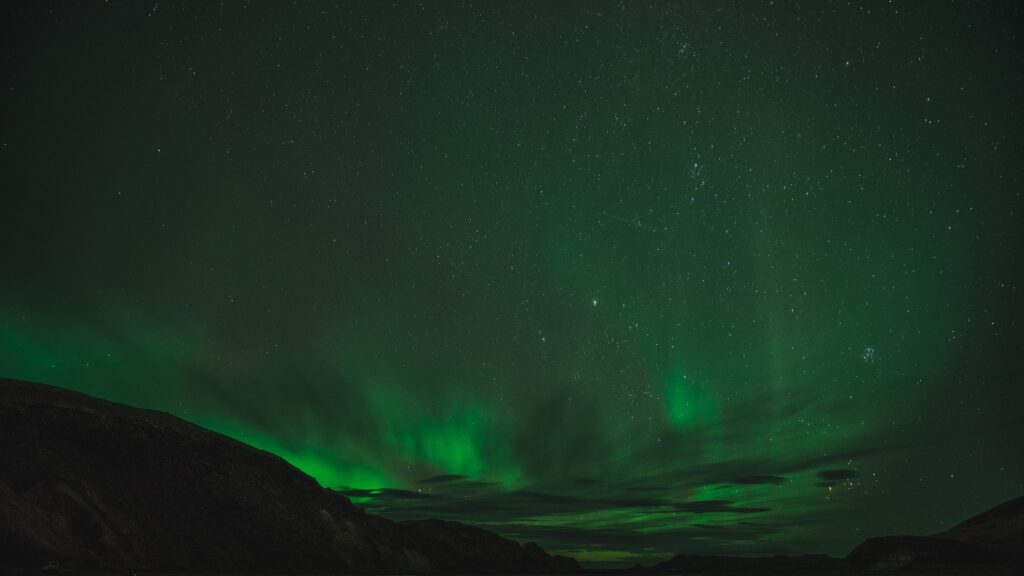




4 Comments
FX Nolan Jr
The alternate suggestion of Chena Hot Springs (not a NP) would be better than Denali for sure. It has lots of Asian visitors in the winter because of that. For a NP, Gates of the Arctic would probably be the best for the aurora, but it’s in the Brooks Range above the Arctic Circle, is not accessible by road, has zero services or amenities, and damn near nobody goes there in the winter.
Jennifer Melroy
Chena verses Denali is a matter of personal preference and weather. I love Chena Hot Springs but hate the crowds (plus the clouds settled in while we were there and we never saw the sky or the lights).
Gates of the Arctic didn’t make the list due to limited access (same thing with Kobuk). I can’t in good conscience recommend a National Park for Northern Light viewing that the average National Park visitor can’t/shouldn’t visit. No one outside of HIGHLY experienced Arctic outdoors people/locals who have lived their all their lives should be in Gates during the winter.
Jackie S.
I didn’t know you could see the Northern Lights in the U.S. I always thought you needed to go to Iceland or Norway. It’s on my bucket list to visit Glacier National Park so I can’t wait to plan a future trip to see the park and also the Northern Lights at the same time. Thanks for sharing this helpful post!
Jennifer Melroy
Seeing the northern lights in a national park has a huge luck component. The conditions have to be perfect for most of the parks and that isn’t a rare thing but isn’t something that you should count on when planning an national park trip.